NOAA Ocean Exploration 2023 Expeditions
NOAA Ocean Exploration works with partners to explore previously unknown areas of our ocean, making discoveries of scientific, economic, and cultural value and supporting innovations in exploration tools and capabilities. In 2023, projects will span the globe, from exploring hydrothermal vents along the Mid-Atlantic Ridge to diving deep in the waters off Alaska, using new technologies to hunt for methane seeps off the U.S. West Coast, and searching for World War II cultural resources in the Gulf of Mexico and Pacific. Read on to learn more about what we have planned for this year and check back often as we add summaries highlighting major accomplishments and other content from each expedition.
Note that dates are subject to change.
Legend
NOAA Ocean Exploration conducts ocean exploration expeditions on NOAA Ship Okeanos Explorer, the only federal vessel dedicated to exploring our largely unknown ocean for the purpose of discovery and the advancement of knowledge about the deep ocean.
NOAA Ocean Exploration provides support to the NOAA Ocean Exploration Cooperative Institute to explore, map, and characterize the nation’s vast ocean territory, to develop and implement new technologies, and to engage future generations of ocean scientists, engineers, and stakeholders.
NOAA Ocean Exploration manages an annual ocean exploration competitive grant program to catalyze the ocean exploration community and advance ocean knowledge across three categories: ocean exploration, technology, and maritime heritage.
This expedition is expected to feature live video.
Expeditions led or supported by NOAA Ocean Exploration in 2023 are described below; click on a title to expand the text and learn more about an individual expedition.
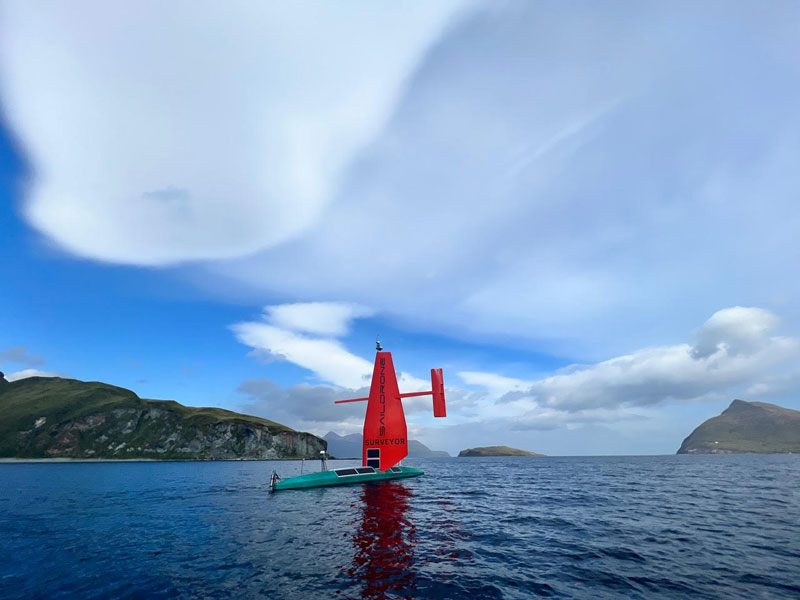
January/February 2023
Ocean data are critical to informing our understanding of important issues such as sustainable use and stewardship of ocean resources (including fisheries, offshore energy, and seabed minerals), safe navigation, hazard assessment, national security, and climate change. But, the ocean is vast, and data gaps are significant. To fill some of these gaps, a public-private partnership was forged with the primary goal of using an uncrewed surface vessel to collect ocean mapping and environmental data in high-priority unexplored waters around Alaska’s Aleutian Islands. In early 2023, this project will conclude with seafloor mapping off the coast of California.
Learn more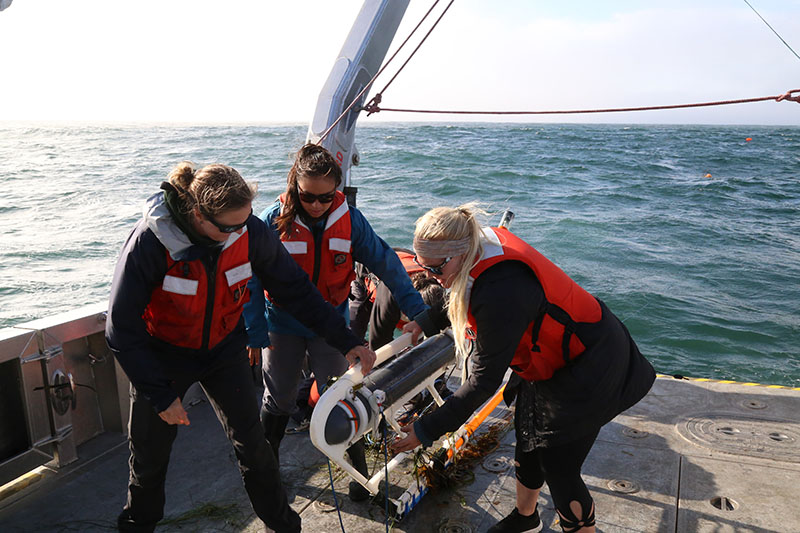
Paleolandscapes, Paleoecology, and Cultural Heritage on the Southern California Continental Shelf
January 2-12, 2023 (Second of Two Expeditions)
First Expedition
Archaeological evidence found at coastal sites in Southern California suggests the region was once populated by early maritime hunter-gatherers and that similar sites, inundated by sea-level rise approximately 20,000-8,000 years ago, are likely to also exist on the seafloor. Building off their previous work, the research team will search for and study ancient landforms, unique environmental features, and archaeological sites on the submerged landscape of the Southern California continental shelf. Using both traditional (sub-bottom sonar) and emerging methods (controlled source electromagnetic technology), the team will map the seafloor in the project area to identify features that may have once attracted occupation, like ancient channels and estuaries and tar seep deposits. They will use this information to target sites for exploration and sample collection with a remotely operated vehicle. The researchers will incorporate findings into existing maps and models to improve understanding of the project area’s ancient landscape, how it changed over time, and the reasons for those changes, as well as the importance of the region in the history of human migration to the Americas. Findings will also be used to inform the protection of the region’s archaeologically and biologically sensitive landscapes.
Learn more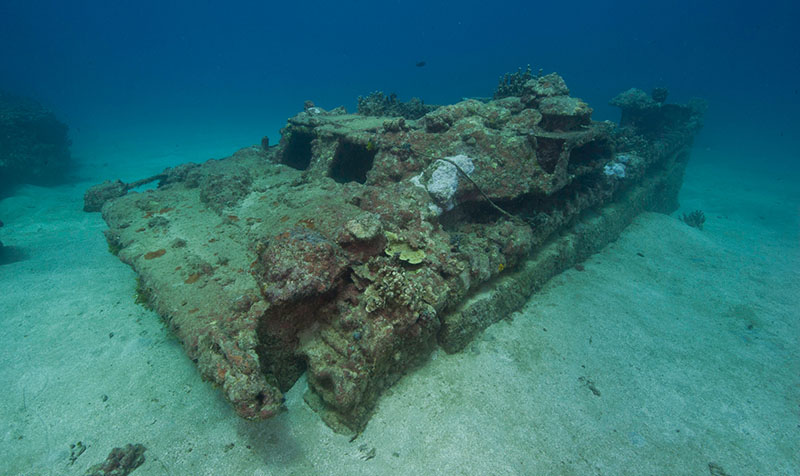
January 26-February 25, 2023
July 27-August 23, 2023
During World War II (WWII), Guam was a strategic military location for both the United States and Japan. In July 1944, U.S. troops invaded and secured the Japanese-held island. There has not been a comprehensive inventory of the submerged resources related to the invasion, but evidence suggests there is likely a significant amount of WWII-related cultural resources on the seafloor near the landing beaches of Asan and Agat (now units of War in the Pacific National Historical Park). This research team will use autonomous underwater and remotely operated vehicles and divers to identify, map, and document submerged resources related to the invasion (e.g., shipwrecks, aircraft, amphibious vehicles, and artillery). They will also assess war-related impacts on the coast, seafloor, and barrier coral reef to investigate how damage to the reef may have impacted the island’s ecosystem and coastal vulnerability. This project will further our understanding of one of the most significant invasions of the WWII Pacific theater as well as how it may have shaped the natural environment in the area today.
Learn more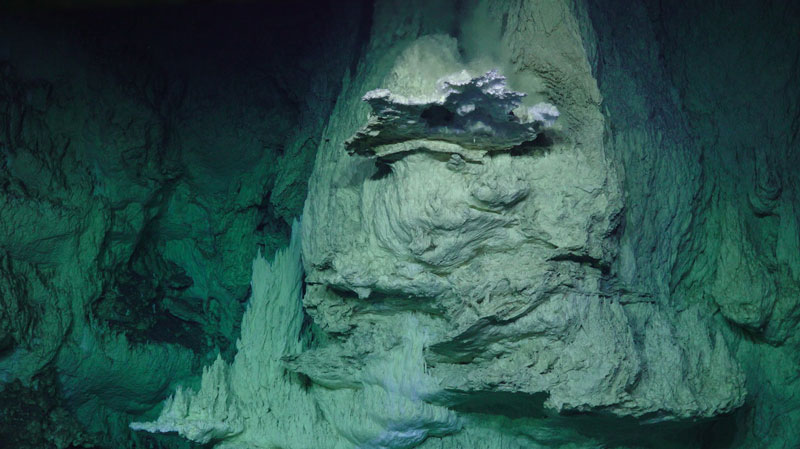
Searching for Serpentinization-Driven Hydrothermal Activity on Oceanic Core Complexes of the Mid-Atlantic Ridge
March 3-April 11, 2023 (FKt230303)
Live Video
In 2000, the discovery of the Lost City hydrothermal vent field near the Mid-Atlantic Ridge revealed a new kind of hydrothermal system driven by serpentinization, a heat-producing chemical reaction between seawater and mantle rocks. This type of venting is not well documented or understood. To learn more about it, this research team will explore areas of the seafloor near the slow-spreading Mid-Atlantic Ridge where mantle rocks are exposed (oceanic core complexes) and serpentinization-driven hydrothermal venting is likely. They will use ship-based multibeam mapping to guide operations; conductivity, temperature, and depth (CTD) systems to detect signs of venting in the water column (e.g., physical or chemical changes); two autonomous underwater vehicles to locate the vents themselves; and a remotely operated vehicle to collect additional data, including imagery and samples of fluids, rocks, and marine life. With this research, the team aims to improve understanding of the prevalence and geochemical and ecological significance of this form of hydrothermal activity. In addition, the team will explore two volcanically driven hydrothermal fields on the Mid-Atlantic Ridge axis to determine the presence and chemistry of active vents and the makeup of the biological communities they support as they relate to proposed international mining activities and habitat connectivity.
Learn more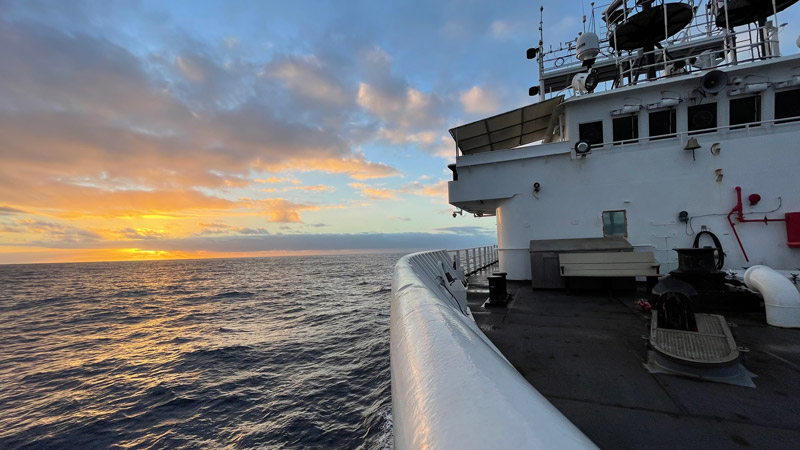
April 13-27, 2023: 2023 EXPRESS: Shakedown and West Coast Exploration (ROV and Mapping) (EX2301)
October 21-November 10, 2023: 2023 EXPRESS: Exploration of Central California Coast (AUV and Mapping) (EX2308)
November 29-December 8, 2023: 2023 EXPRESS: West Coast Exploration (AUV and Mapping) (EX2309)
Live Video
EXpanding Pacific Research and Exploration of Submerged Systems (EXPRESS) is a multiyear, multipartner cooperative research campaign designed to collect deep-sea data to guide wise use of living marine resources and habitats, inform ocean energy and mineral resource decisions, and improve offshore hazard assessments. In 2023, NOAA Ocean Exploration will conduct three expeditions off the U.S. west coast on NOAA Ship Okeanos Explorer to support this campaign, building off work done with Okeanos Explorer in 2022.
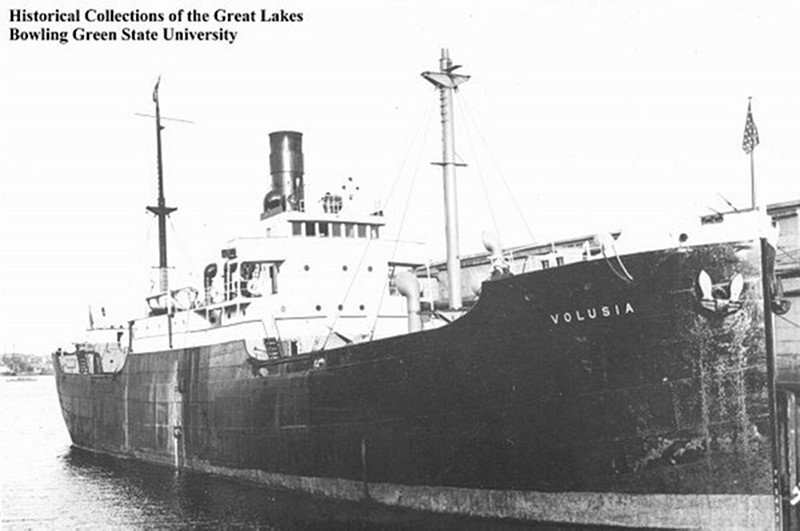
April 14-22, 2023
On May 4, 1942, the U.S. freighter Norlindo became the first ship lost to Germany’s World War II campaign in the Gulf of Mexico. The research team plans to locate, explore, and document the wreckage of this significant archaeological resource in an underexplored area of the eastern Gulf where little is known about the nature and preservation status of World War II casualties. By doing so, they will shed light on the Gulf’s unique history and inform the ship’s status as a potential environmental hazard and its eligibility for listing on the National Register of Historic Places. The research team will conduct a high-resolution acoustic survey in the area of Norlindo’s last known position, about 80 miles northwest of the Dry Tortugas islands, collecting bathymetric and water column data. They will also produce a benthic habitat map that incorporates microbiological data acquired by sampling water, sediment, and wreck debris. This project will improve understanding about how steel historic shipwrecks from World War II shape seafloor biogeography and biodiversity.
Learn more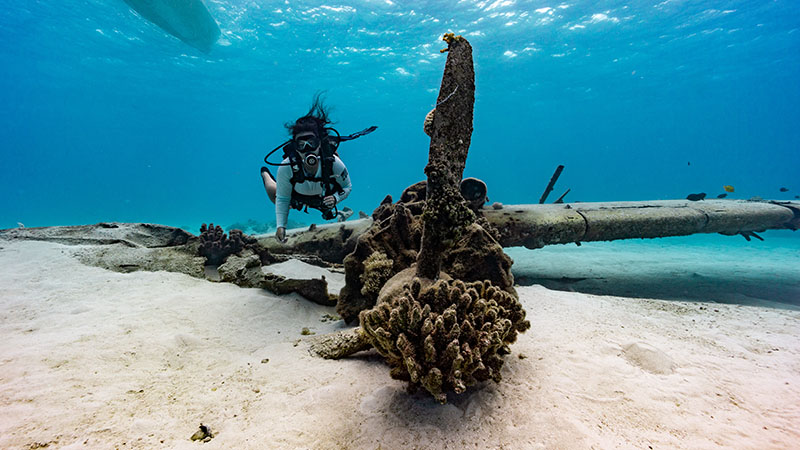
April 22-May 14, 2023
The U.S. victory over Japan in the Battle for Saipan in the Northern Mariana Islands in 1944 was a decisive moment for World War II (WWII) in the Pacific. Today, the landing beaches for the U.S. invasion are part of a U.S. National Historic Landmark District. Despite their significance, the subsea remains of the battle (shipwrecks, tanks, amphibious vehicles, aircraft, and more) remain unexplored. This research team will use emerging technologies to locate, explore, and characterize the offshore battlefield’s maritime heritage resources. They will apply artificial intelligence to lidar data to locate and identify these resources and use remotely operated vehicle photogrammetric modeling to document them. In addition, at each site they will collect environmental DNA to better understand its biodiversity and employ military veteran divers, as part of a citizen science rehabilitative therapy training program, to gather the data. The results of this project will help marine resource managers understand the socioeconomic value of these important archaeological and biological resources (e.g., for tourism and fisheries) and increase public appreciation and understanding of WWII maritime heritage.
Learn more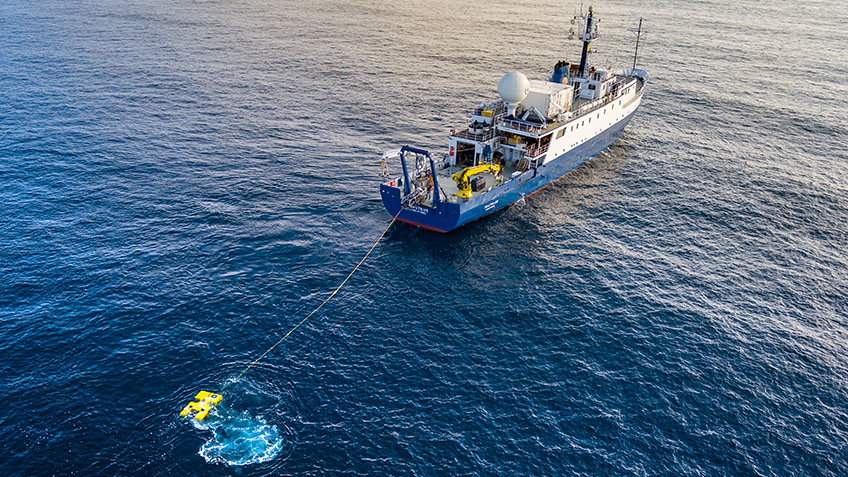
April-December 2023
Live Video
NOAA Ocean Exploration supports Exploration Vessel Nautilus via the NOAA Ocean Exploration Cooperative Institute, working with Ocean Exploration Trust to advance marine technologies and reduce uncertainties in critical parts of our largely unexplored deep ocean. In 2023, between April and December, Nautilus will be used to map unsurveyed seafloor and characterize deep-sea habitats in the central and eastern Pacific and to integrate emerging exploration technologies into its operations. Information about the 2023 season on Nautilus is on Nautilus Live, where live video from remotely operated vehicle dives will also be streamed for public viewing.
Learn more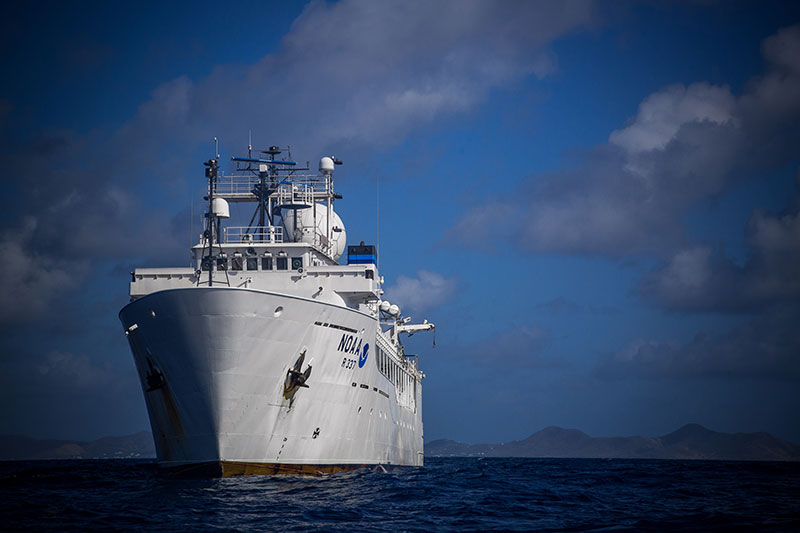
May 5-27, 2023: Seascape Alaska 1: Aleutians Deepwater Mapping (EX2302)
June 5-20, 2023: Seascape Alaska 2: Aleutians Deepwater Mapping (EX2303)
July 14-July 25, 2023: Seascape Alaska 3: Aleutians Remotely Operated Vehicle Exploration and Mapping (EX2304)
August 1-17, 2023: Seascape Alaska 4: Gulf of Alaska Deepwater Mapping (Mapping) (EX2305)
August 23-September 16, 2023: Seascape Alaska 5: Gulf of Alaska Remotely Operated Vehicle Exploration and Mapping (EX2306)
September 23-October 14, 2023: Seascape Alaska 6: Gulf of Alaska Transit Mapping (EX2307)
Live Video
Despite contributing the largest area to the U.S. Exclusive Economic Zone, waters around Alaska remain one of the least explored areas in the United States. To close regional data gaps and increase our understanding of Alaska’s deep waters, NOAA Ocean Exploration and partners will conduct six telepresence-enabled expeditions on NOAA Ship Okeanos Explorer offshore Alaska in 2023. The expeditions will include mapping and remotely operated vehicle operations to collect data in support of Seascape Alaska. Seascape Alaska is a regional campaign involving a collaboration of federal, tribal, state, and nongovernmental partners focused on fully mapping the U.S. waters off Alaska in support of the National Strategy for Mapping, Exploring, and Characterizing the United States Exclusive Economic Zone. Data collected during expeditions on Okeanos Explorer may support safer navigation and community access, hazard mitigation, preservation of marine habitats and heritage, a deeper comprehension of natural resources, and fisheries management.
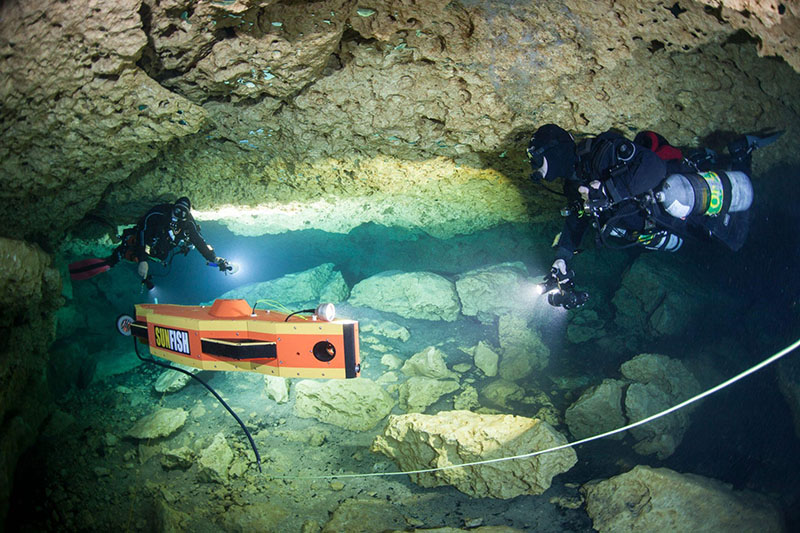
May 24–June 10, 2023 (Second of Two Expeditions)
Evidence suggests that humans have made the northwest coast of North America their home for at least 17,000 years. The land these First Peoples inhabited is now underwater. Tangible evidence of their presence should be preserved in submerged caves and rock shelters, but these features are difficult to access and have not been formally explored. To learn more about how and when people migrated to the Americas, this team will search for evidence of human occupation on the continental shelf of southeast Alaska in an area that has not been accessible to humans for over 10,000 years. Using the SUNFISH autonomous underwater vehicle, which is designed to operate in complex 3D undersea environments, the team will explore, map, and collect sediment samples from submerged caves and rock shelters. They will then analyze the data and samples collected to further inform our understanding of the past, both human and environmental.
Learn more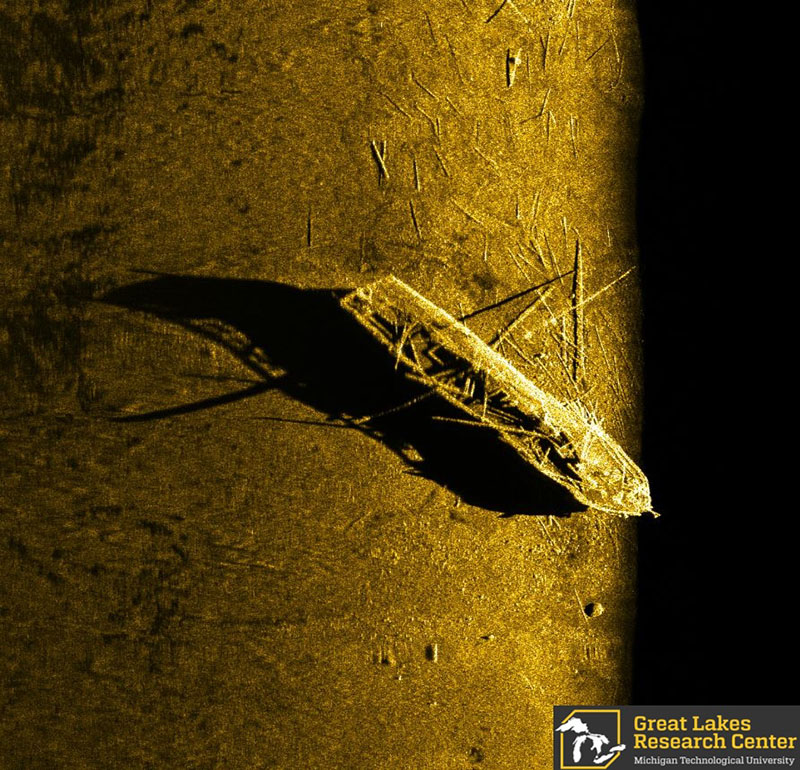
June 5-23, 2023 (Second of Two Expeditions)
Shipwrecks can help us better understand our past, but finding and exploring them is time consuming, labor intensive, and expensive, so most of their tales remain untold. This team aims to increase the efficiency and decrease the costs associated with such exploration efforts (and ocean exploration in general) by advancing the autonomous capabilities of underwater vehicles to search for and survey shipwreck sites. To limit the need for human input, they will develop machine learning methods to detect shipwreck sites from sonar data and develop capabilities that enable underwater vehicles to automatically adapt their routes while exploring sites of interest. To test these approaches, the team will use an autonomous underwater vehicle to search for and survey known and potential shipwreck sites in the Thunder Bay National Marine Sanctuary in Lake Huron. Data collected will inform the management and conservation of these important sanctuary resources.
Learn more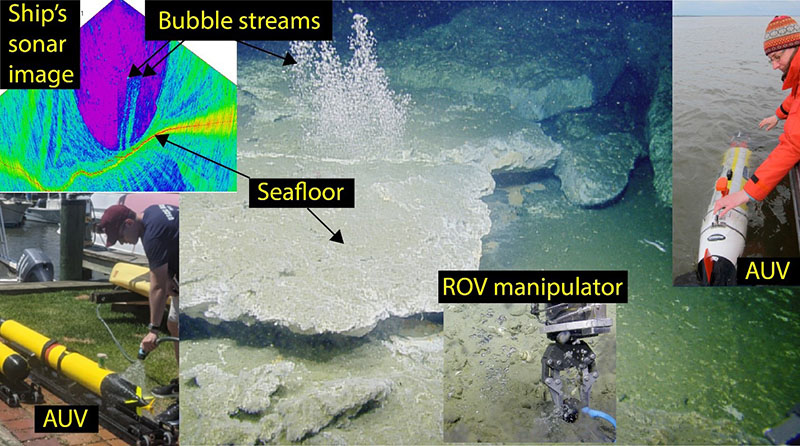
August 11-16, 2023 (First of Two Expeditions)
Methane is a potent greenhouse gas, and it’s released into the ocean from the seafloor as gas bubbles via methane seeps. Despite the prevalence of seeps along continental margins, data is limited, and their impacts on the ocean and atmosphere, both positive and negative, are poorly understood. To advance our knowledge about methane seeps, this research team will develop and demonstrate an approach to efficiently and effectively map and characterize methane seeps over wide areas. This approach will use easily deployable and relatively inexpensive autonomous underwater vehicles equipped with imaging sonars and custom sensors to find and map seeps and measure associated bubbles and dissolved methane right at the source and up through the water column. The team will demonstrate their approach at known seep sites off the coasts of Washington and Oregon with the goal of improving our understanding of how methane from these seeps influences life on the seafloor and in the water column as well as its role in the global carbon cycle.
Learn more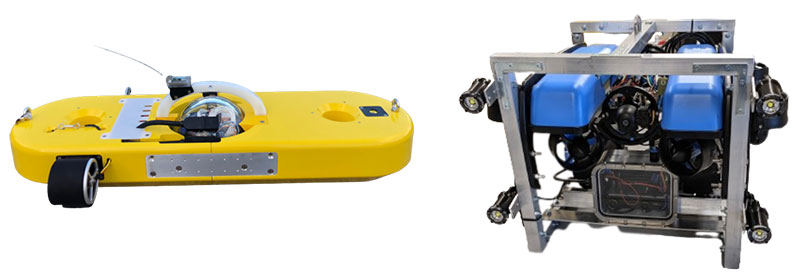
August 14-18, 2023
Deep-sea corals provide habitat for a wide variety of marine life. Despite their importance to the environment, little is known about them and the threats to their survival. Deep-sea data collection is expensive, and annotation and analysis of underwater imagery is time consuming. To help advance the protection of deep-sea coral ecosystems, this team will improve and validate a new, low-cost, open-source, autonomous underwater vehicle (AUV) and develop automatic annotation software. They will test the AUV and collect data at natural and artificial reefs off the coast of Miami and in the Florida Keys known for their high diversity and density of corals. Data collected will be used to generate photometric 3D reconstructions of the seafloor and for the development of the software. This project will benefit the scientific community in two key ways: It will make deep-sea exploration more accessible to the larger scientific community and will increase the speed of data analysis and availability.
Learn more
August 15-September 15, 2023
The Svyatoy Nikolai, a survey vessel for the Russian American Company, was lost at the turn of the 19th century in the waters of today’s Olympic Coast National Marine Sanctuary (OCNMS). In 1808, the ship and crew (composed of men and women; Russian, English, and Aleut) departed Alaska to map the Pacific coastline and identify potential locations for an Oregon-based colony. The ship was driven ashore and abandoned off the coast of Washington. The stories of the crew and their subsequent interactions with Indigenous communities of the Hoh, Makah, Quinault, and Quileute tribes provide valuable insight into maritime history in the era of colonization. To better understand the region’s maritime heritage, this research team will search for the remains of Svyatoy Nikolai and other shipwrecks in OCNMS through remote sensing and targeted, noninvasive archaeological surveys. This project will result in baseline data to support monitoring and management of historic sites; develop and strengthen relationships among federal, state, and tribal heritage partners and other stakeholders; and enhance our understanding about the first interactions between Indigenous communities and settlers in the Pacific Northwest.
Learn more
August 18-29, 2023
There are more than 4,000 known shipwrecks in the Gulf of Mexico. While the cultural, historical, and archaeological value of shipwrecks is established, their role in ecosystem processes is still unclear. During this project, the research team will confirm if five sonar targets in close proximity to each other in the Gulf’s Keathley Canyon are shipwrecks and study how deep-sea shipwrecks influence microbial life on the seabed. The team will use a remotely operated vehicle to explore and document the anticipated discoveries. Using these discoveries, the team will train and validate a machine-learning-based exploration tool that uses microbiomes and their seabed signatures to predict the locations of shipwrecks. This project has the potential to result in significant new discoveries about the history and ecology of historic shipwrecks, a new tool to drive discovery of other shipwrecks and submerged cultural resources, and an understanding of if and how built seafloor features (e.g., shipwrecks, oil- and gas-related structures) impact microbiome diversity.
Learn moreLast updated on January 26, 2024
Published March 9, 2023